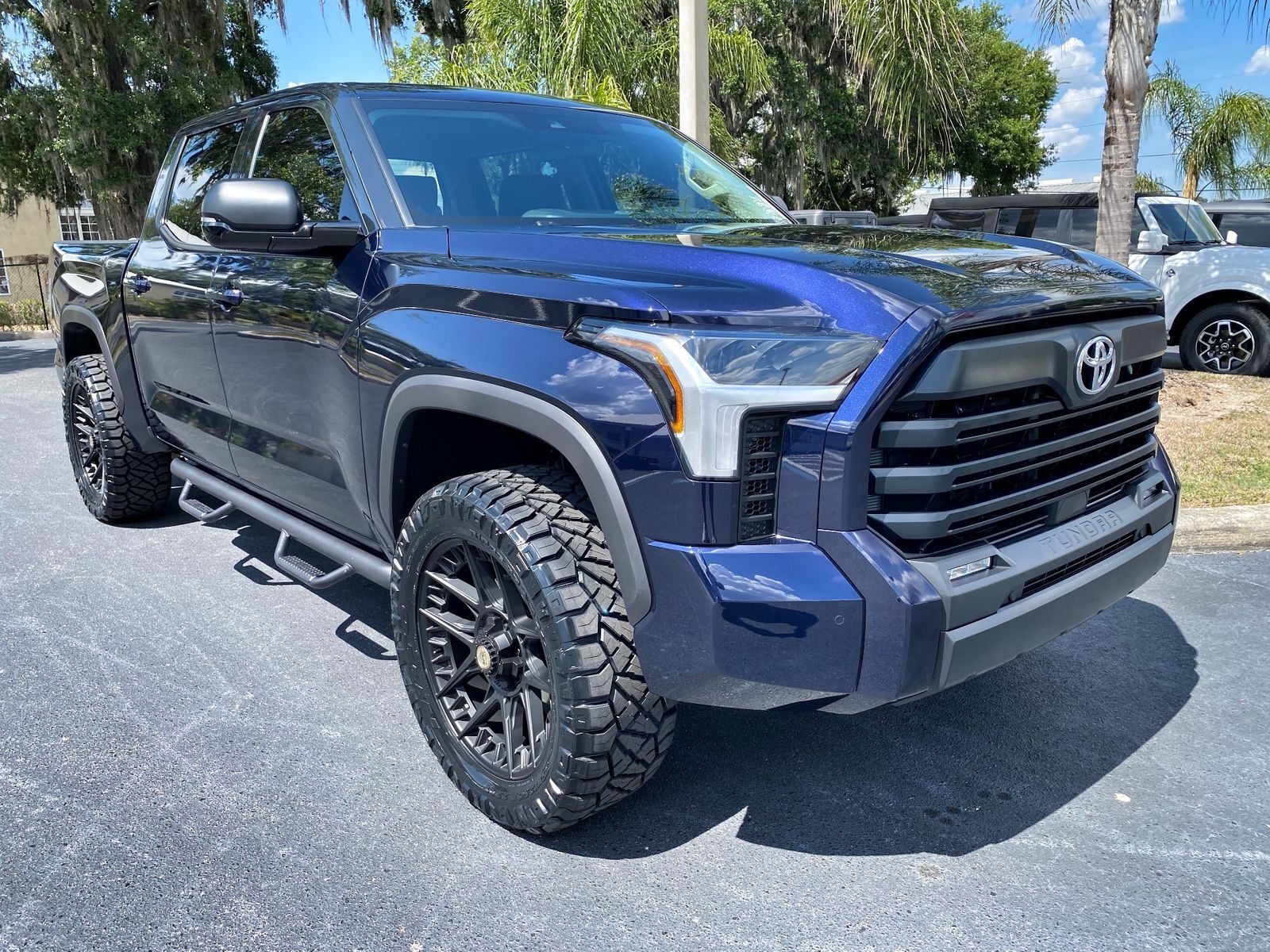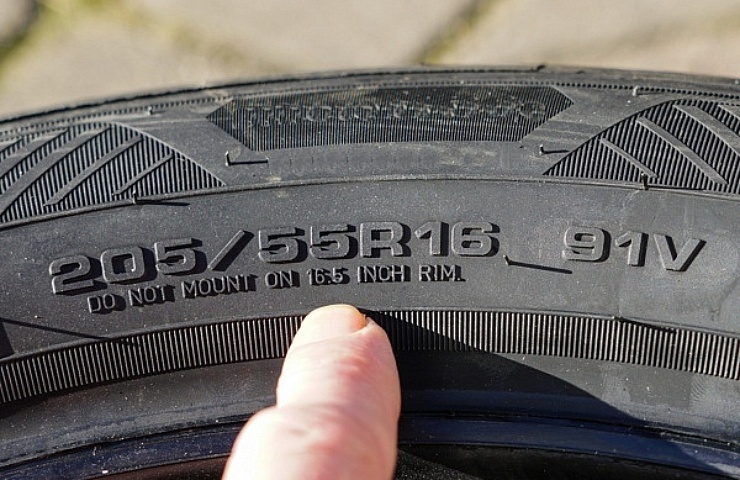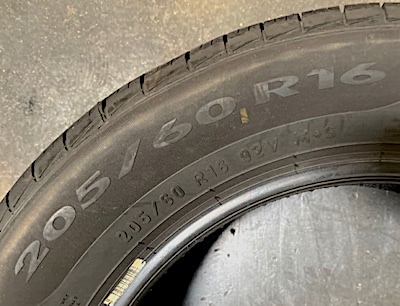Contents
Tire height comes into play when replacing your current tires. You only need to perform simple math to figure out the tire height. Here’s how to do it.
Numbers on the Sidewall Help Find Tire Height
A lot of information about your tires is found on the sidewall. Find the number that resembles this: P205/60 R16.
- The first numbers tell you the section width (the width of the tread) in millimeters. So, with this example, 205 mm is the section width.
- The next numbers are the aspect ratio. In our example, it is 60. This number indicates that the sidewall height—measured from the tire tread to the wheel rim—is 60 percent (0.60) of the section width.
Check it out: How To Read the Side of Your Tire
Use These Numbers to Determine Tire Height
- First, multiply the section width by the aspect ratio. This gives you the height, in millimeters.
205 x 0.60 = 123 mm - To convert to inches, divide the height by 25.4 (the number of millimeters per inch). This will give you the height—in inches—of the top and bottom portions of the sidewall.
123 mm/25.4 = 4.84 inches - You can also find this number by dividing the section width by 25.4 (the number of millimeters per inch), then multiplying by the 60 percent aspect ratio (0.60).
205/25.4 = 8.07 inches
8.07 x 0.60 = 4.84 inches - To determine the total tire height, multiply by two, and add the rim size (numbers following the R on the sidewall imprint), 16 in this example.
4.84 x 2 + 16 = 25.68
The tire in our example measures 25.68 inches in total.
Can You Change Your Tires to a Different Height?

1972 Chevrolet Impala Convertible on 22s
While you can change your tires to a different height, there are good reasons to stick with the size printed on the door jamb label on your vehicle. This is the size that the manufacturer recommends.
You must ensure tire sizes are compatible, or you could get into trouble.
Taller tires provide these benefits:
- Reduced gap between tire and fender
- A softer ride
- Increased ground clearance
However, there are also downsides to a taller tire:
- Every inch creates a loss of torque
- Stopping power is negatively impacted
Additionally, changing to a larger tire without the correct sidewall height can damage the suspension system, tires, and wheels. The speedometer may also need recalibration.

1988 Suzuki Samurai on 35s
Choosing a tire that is compatible with what you already have is much safer and less costly. If you want bigger tires, consider adding a lift kit and installing larger wheels to accommodate the increased size.
Can You Change Tires to a Different Width?

This 2023 Toyota Tundra on 35-inch Nitto Ridge Grapplers might need wider fender flares, depending on state laws.
The next logical question looks at the width of the tires. There are some benefits to going with a wider tire, but there are significant liabilities too.
Here are the pros:
- Increased lateral grip
- Better braking
- Less roll through corners
- Aggressive appearance
On the flip side, there are a few downsides:
- More fuel consumption
- Increased rolling resistance
- Reduced turning radius
- Uptick in road noise
- Often don’t fit the OEM wheel
There are also laws about tire width, so it’s important to research these before making any significant changes.
Tire Sizes Explained
There are other specifications that matter when choosing new tires. It’s important to match these numbers perfectly or to work with a professional to select the correct tires for your vehicle.
Let’s look at our example from above to decipher these measurements.
P205/60 R16 89H
- Tire type. The first letter shows the class of tire. In this case, P stands for passenger vehicle. There’s also LT for light truck tires or ST for special trailer tires. It would be dangerous to switch out the tire type on your vehicle.
- Tire width. The three-digit number (205) shows the width in millimeters. It’s measured by looking at the tire straight on and measuring side to side. There are times when increasing the tire width improves on-road handling.
- Aspect ratio. The number after the slash (60) is the percentage of sidewall compared to the wheel width. The higher the number, the more sidewall there is. In this case, the tire sidewall is 60 percent as high as the tire’s width.
- Construction type. There’s a single letter showing you the construction. In this case, R stands for radial tires, the most common type.
- Wheel diameter. The last two-digit number reveals the wheel diameter, measured in inches. It’s measured by the space between the areas where the bead seats on the rim. You may be able to increase the wheel diameter slightly for better curb appeal, but sometimes a lift kit is needed.
- Load index. This two- or three-digit number shows how much weight the tire can support. If the number is 89, it has a load capacity of 1,279 pounds when properly inflated. Changing the tires’ load index is not recommended as it could compromise their integrity.
- Speed rating: After the load index, a letter reveals the rated speed of the tire. It’s typically a single letter, but not always. If the tire has an “H” speed rating, it’s good to go up to 130 mph.
Contact a local tire professional if you need more help. After all, tires are the only things between you and the road.
Shop now for tires





